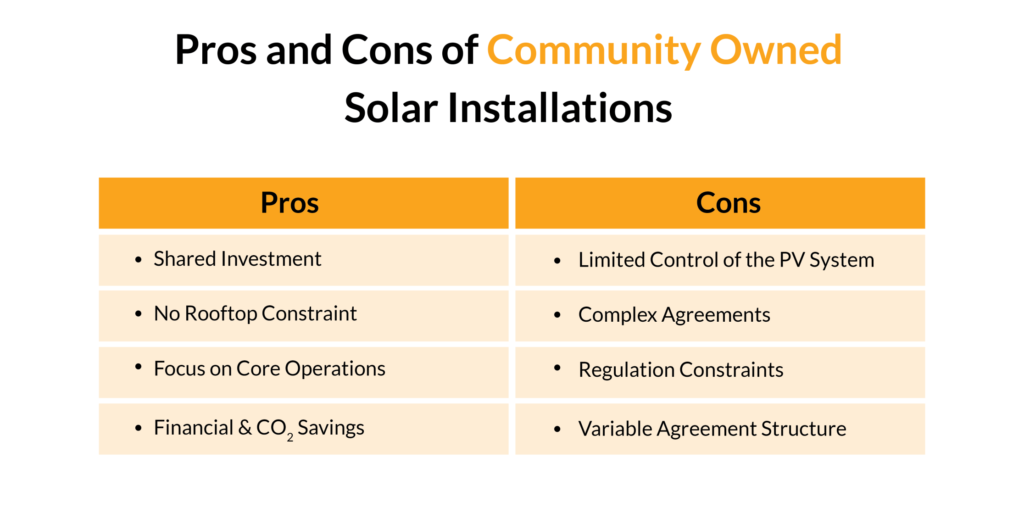
The use of commercial rooftop solar PV systems has become increasingly popular due to the financial benefits and environmental advantages they offer. However, choosing the right ownership structure for these systems can be challenging and requires a thorough understanding of the available options.
We have analysed for you three of the most common ownership models.
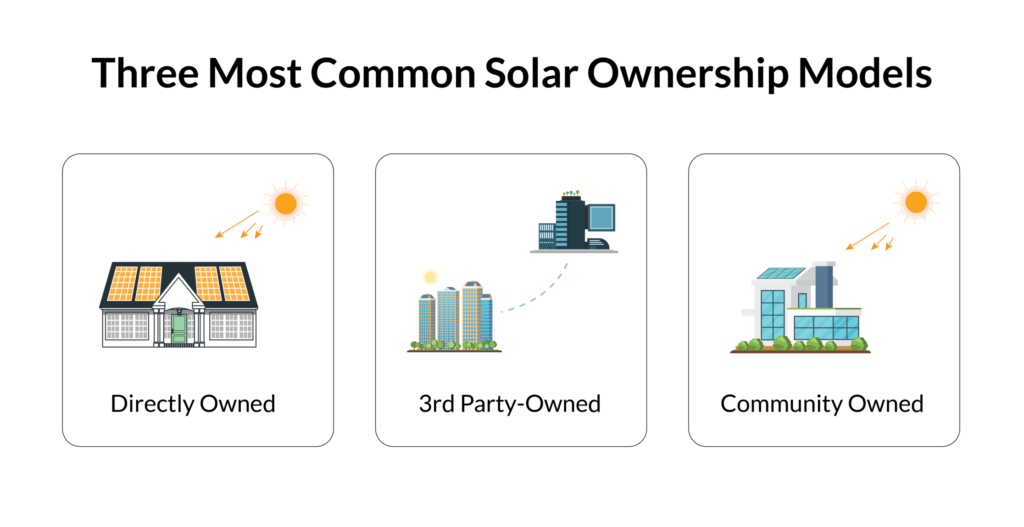
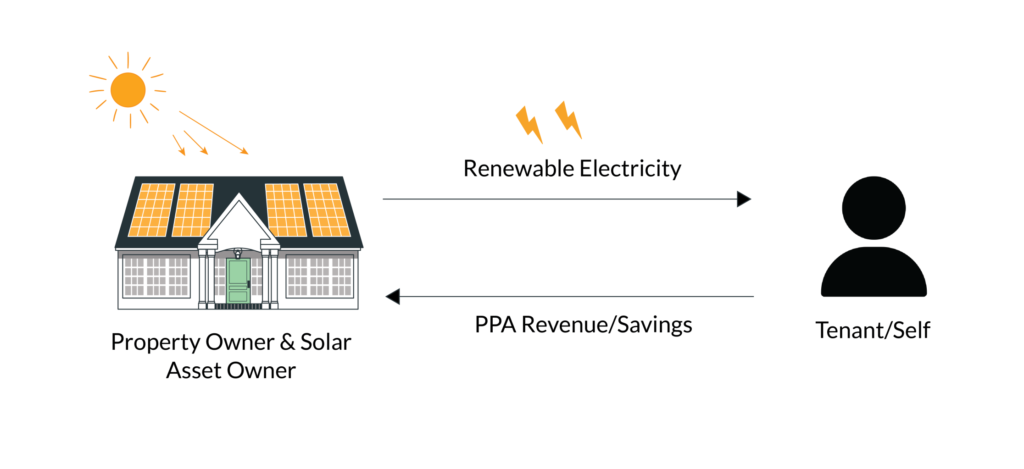
This is the simplest and most traditional model, where the asset owner purchases and owns the solar PV system either through cash purchase or loan financing. It is suitable for asset managers who have access to capital to invest in solar and want complete control of it. It results in high financial returns and CO2 abatement and allows them to take part in various forms of subsidies, financial incentives, or tax breaks depending on the jurisdiction.
However, this requires the asset managers to be involved in the process of planning, developing, and operating the PV system and will ultimately carry the associated risk.
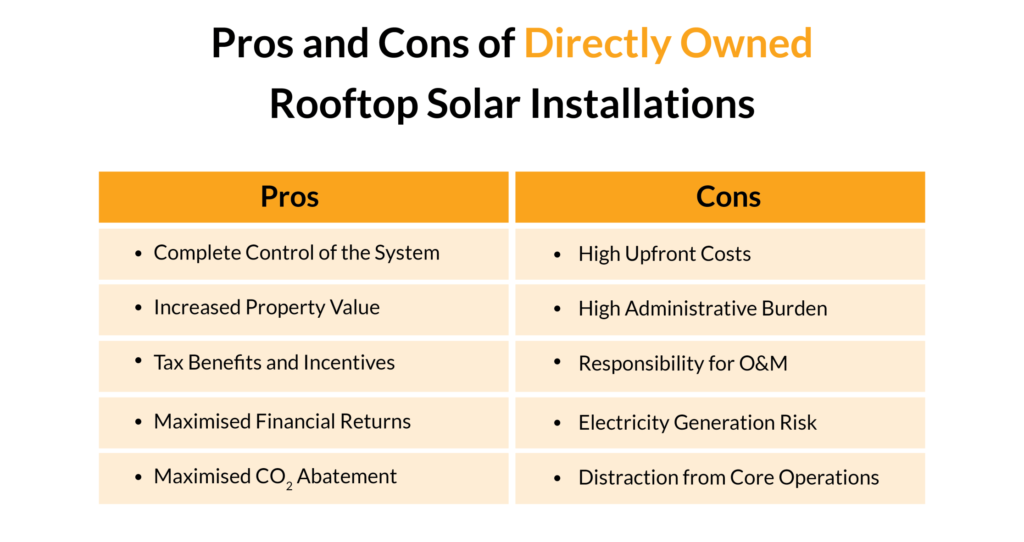
3rd Party-Owned

This model can take different forms depending on the agreement between the asset owner and the 3rd party. Most commonly, it involves the asset owner entering into a leasing arrangement with the 3rd party, which invests and installs a solar PV system. The asset owner receives a rental fee while the 3rd party benefits from the operation of the PV system.
This structure is suitable for asset managers looking for the least involvement in the development and operation of the PV system. It requires no capital expenditure on their behalf, and results in the least disruption of their core activities. Furthermore, the rental fee reduces the project risk as cash flow is predictable for 10 to 20 years depending on the agreement.
On the other hand, it leads to reduced financial and environmental benefits and is a long-term commitment to a third party, which may not be suitable for all asset managers. Typically, the asset owner’s average annual profit will be reduced by 50-70%.
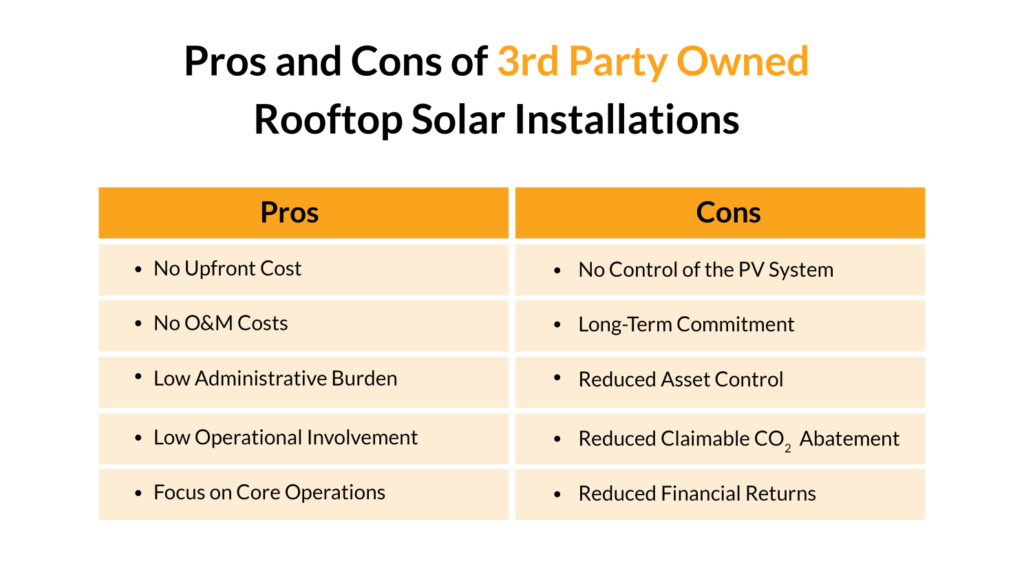
Community Owned

Community-owned solar projects are common in the United States where multiple businesses jointly invest in a PV system, typically located offsite, which is then operated and maintained by a community organisation or cooperative.
This can be a good option for businesses with limited rooftop space and can result in a reduced investment due to the economies of scale involved. However, it also involves complex agreements and coordination among the different stakeholders and is subject to zonal and regulatory restrictions.
